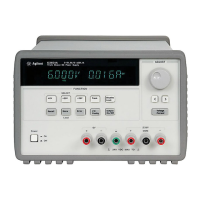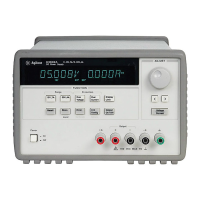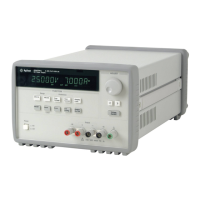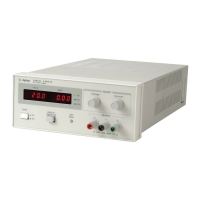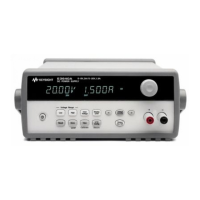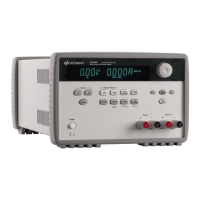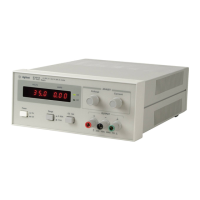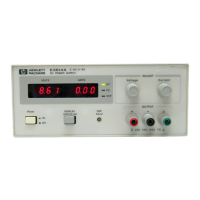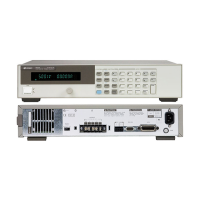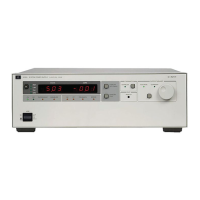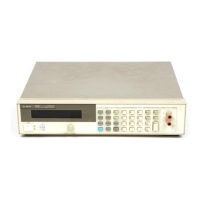Chapter 2 Initial Operation
Output Checkout
18
Current Output Checkout
The following steps check basic current functions with a short across the power
supply’s output.
1 Turn on the power supply.
The power supply will go into the power-on / reset state; the output is disabled (the
OFF annunciator turns on); the 8V/20A* or 25V/7A** range is selected (the 8V* or
25V** annunciator turns on); and the knob is selected for voltage control.
2 Connect a short across (+) and (-) output terminals with an insulated test lead.
Use a wire size sufficient to handle the maximum current (See "Table 7-1 Wire Rating"
on page 153 in chapter 7).
3 Enable the output.
The OFF annunciator turns off and the 8V* or 25V**, OVP, and OCP annunciators
are lit. The
CV or CC annunciator turns on depending on the resistance of the test lead.
The blinking digit can be adjusted by turning the knob. Notice that the display is in
the meter mode. ‘‘Meter mode’’ means that the display shows the actual output voltage
and current.
4 Adjust the voltage limit value to 1.0 volt.
Set the display to the limit mode (the Limit annunciator will be blinking). Adjust the
voltage limit to 1.0 volt to assure CC operation. The
CC annunciator will turn on. To
go back to normal mode, press the
key again or let the display time out for
several seconds .
5 Set the knob to the current control to check that the front-panel ammeter
properly responds to knob control.
Turn the knob clockwise or counter clockwise when the display is in the meter mode
(the
Limit annunciator is off). Check that the ammeter responds to knob control and
the voltmeter indicates nearly zero (the voltmeter will show the voltage drop caused
by the test lead).
*For Agilent E3633A Model **For Agilent E3634A Model
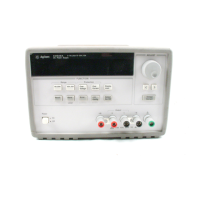
